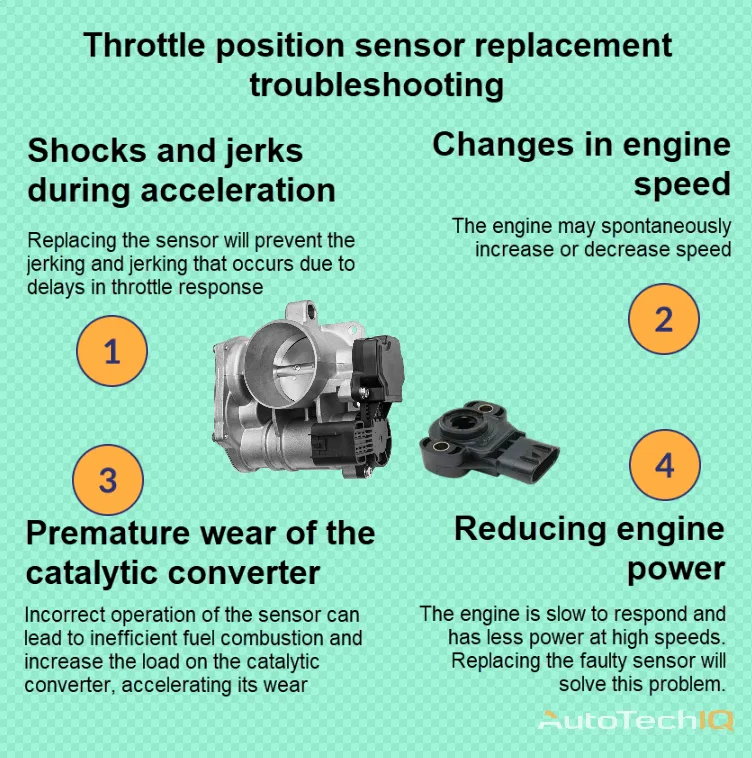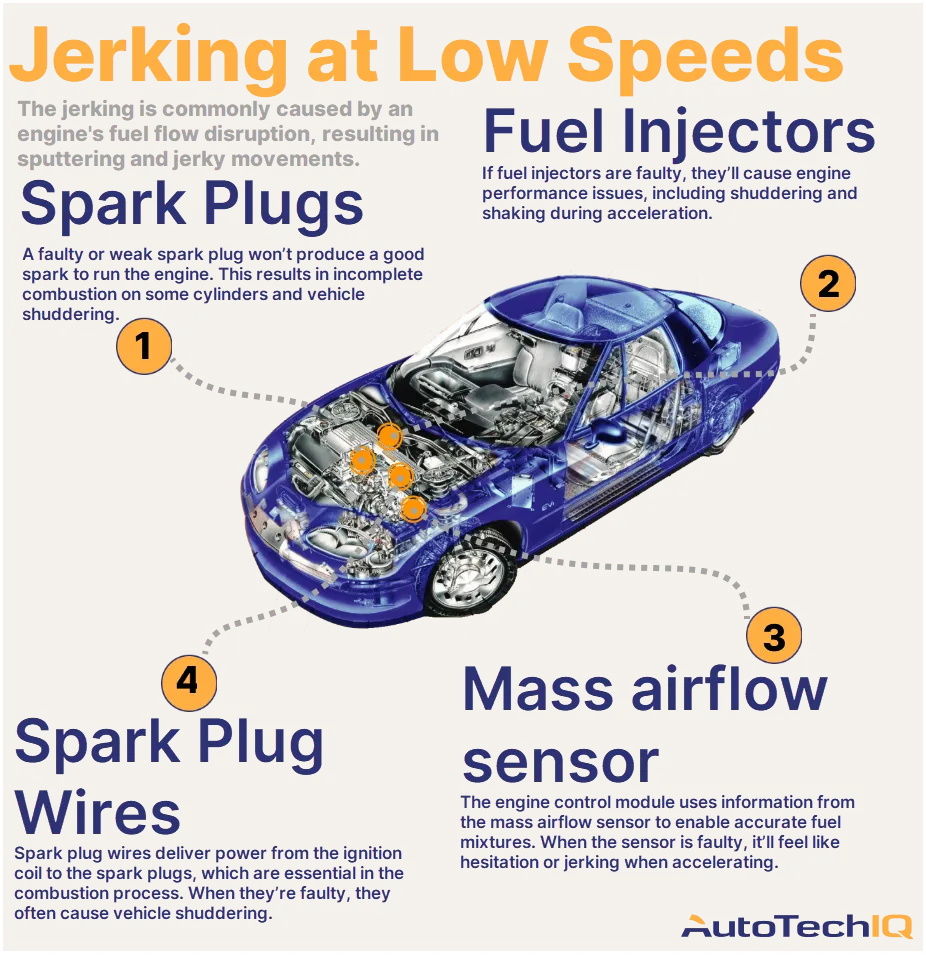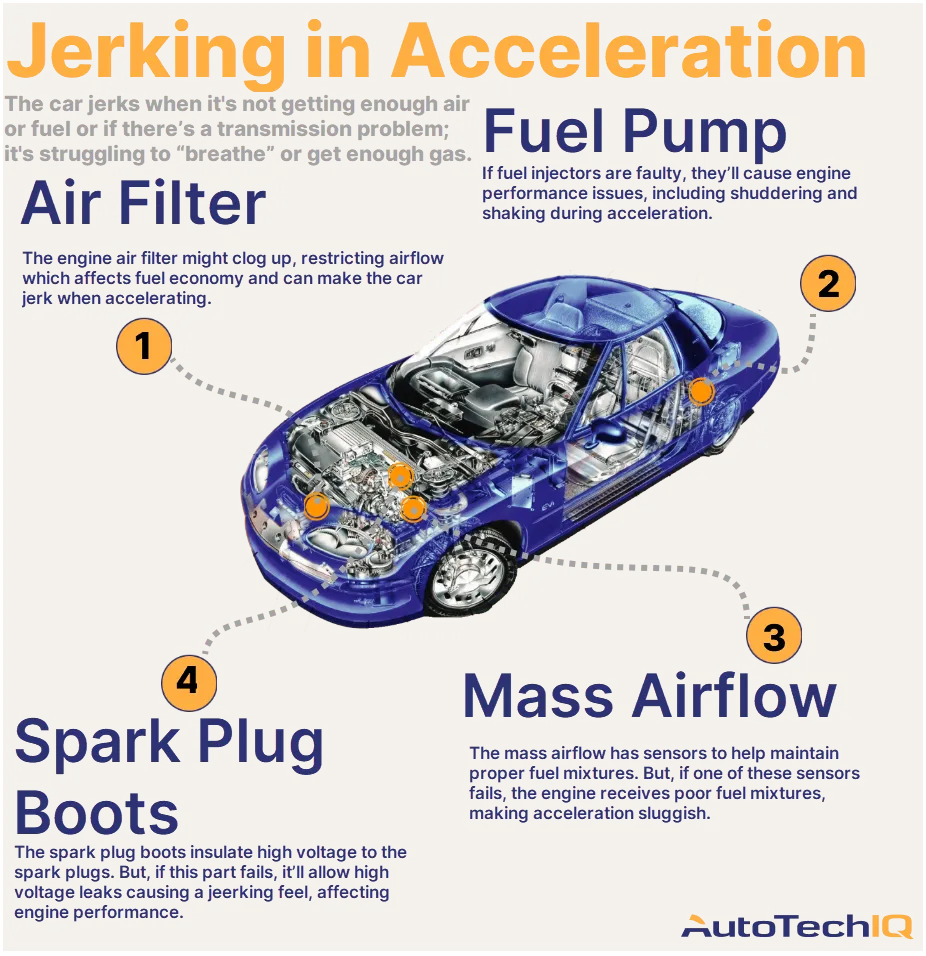
The throttle position sensor determines the amount of air entering the engine and transmits this information to the electronic control unit. Throttle position sensor non-working replacement will solve a number of problems:
- Idle Problems: The engine runs rough or stalls at idle due to incorrect throttle position signals. Throttle position sensor replacement solves this problem.
- Increased fuel consumption: Incorrect sensor readings lead to a richer fuel mixture, increasing fuel consumption and worsening efficiency.
- Difficulty starting the engine: Incorrect signals from the sensor lead to problems with starting the engine, since the electronic control unit cannot correctly calculate the required fuel-air mixture.
- Error Codes and Check Engine Light: Problems with the throttle sensor often result in error codes being recorded in the vehicle's diagnostic system and activating the check engine light.
- Cruise control malfunctions: If your vehicle is equipped with cruise control, incorrect readings from the throttle sensor will cause the cruise control to not operate properly.
- Idle Problems: The engine runs rough or stalls at idle due to incorrect throttle position signals. Throttle position sensor replacement solves this problem.
Replacing the throttle position sensor can restore accurate engine management, optimize fuel consumption and improve overall vehicle performance.




